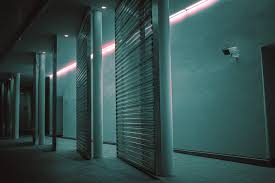See in the Dark How Night Vision Enhances Security Systems
In a world where security is paramount, the ability to monitor environments in low-light conditions is becoming increasingly essential. From bustling restaurant managers overseeing late-night operations to homeowners ensuring their family’s safety after dark, understanding the technology behind night vision can provide peace of mind.
This blog post will explore the intriguing world of night vision security systems, unraveling how they work and why they are critical for maintaining security in low-light conditions.
Why Night Vision Matters in Security Systems
Night vision technology has revolutionized the way we think about security. Before its inception, capturing clear and actionable footage at night was a significant challenge for surveillance systems. The introduction of night vision capabilities has bridged this gap, allowing for continuous monitoring regardless of lighting conditions.
The significance of night vision extends beyond just capturing images in darkness. For restaurant managers, this means ensuring that operations run smoothly even after closing time. Patrons, staff, and property remain under vigilant watch, deterring potential thefts or vandalism.
Similarly, homeowners benefit from the technology’s ability to keep an eye on their property after hours, helping to prevent break-ins and ensuring a restful night’s sleep.
How Night Vision Technology Works
At the heart of night vision technology is the ability to detect and amplify light, whether visible or infrared. When ambient light is low, night vision cameras utilize infrared light to illuminate the area. Infrared emitters, often built into the cameras, emit invisible light that bounces off objects, creating a clear image even in complete darkness.
This process is akin to shining a flashlight in the dark, only the light emitted by infrared is invisible to the naked eye, ensuring surveillance remains discreet. The camera then processes the reflected infrared light, converting it into a visible image on the monitor. This technology is crucial for both restaurant managers and homeowners, providing them with the means to maintain vigilance without drawing attention.
Types of Night Vision Systems
There are several types of night vision systems available, each with unique features tailored to different needs. The most common systems include infrared (IR) systems, thermal imaging systems, and low-light imaging systems.
Infrared systems are favored for their ability to produce clear images, even in total darkness. They rely on infrared emitters to illuminate surroundings, making them ideal for environments with no natural light.
Thermal imaging systems, on the other hand, detect heat signatures rather than light, which can be particularly useful for spotting intruders who might otherwise blend into the background. Low-light imaging systems enhance available light, such as moonlight or streetlights, to produce a visible image. For restaurant managers and homeowners, choosing the right system depends on their specific security needs and environmental conditions.
Benefits of Night Vision Security Systems for Restaurants
For restaurant managers, night vision security systems offer numerous advantages. During after-hours, when staff have left and the premises are closed, these systems continue to provide surveillance, capturing any unauthorized access or suspicious activity. This not only protects the establishment from potential threats but also helps in maintaining compliance with insurance requirements.
In addition to security, night vision cameras can help monitor employee activities, ensuring safety protocols are adhered to and reducing the risk of internal theft. With the ability to record high-quality footage at night, restaurant managers can have peace of mind knowing their business is protected 24/7.
Advantages of Night Vision for Homeowners
Homeowners, too, can reap significant benefits from night vision security systems. One of the primary concerns for any homeowner is the safety of their family and property, especially during the night when visibility is limited. Night vision cameras address this issue head-on, providing clear surveillance footage regardless of the time of day.
These systems are particularly beneficial for homes located in areas with limited street lighting or those with large properties where visibility is a challenge. By installing night vision security systems, homeowners can deter potential intruders before they even set foot on the property, ensuring their loved ones remain safe.
Key Features to Look for in Night Vision Cameras
When selecting a night vision security camera, it’s essential to consider several features to ensure you get the best performance. Look for cameras with a high resolution, as this will provide clearer images and make identifying individuals easier. A wide field of view is also advantageous, allowing you to cover more area with fewer cameras.
Other critical features include motion detection, which can alert you to movement within the camera’s range, and weather resistance, which ensures the camera can withstand outdoor conditions. These features, combined with effective night vision capabilities, create a robust security solution for any environment.
Installation Tips for Night Vision Security Systems
Proper installation is key to maximizing the effectiveness of your night vision security system. Start by identifying strategic locations where cameras should be placed, such as entry points, dark corners, and areas where valuables are stored. Ensure the cameras are positioned at an appropriate height to capture clear images without obstruction.
Consider the placement of infrared emitters, as they require a clear line of sight to illuminate the area effectively. Avoid pointing cameras directly at bright lights, as this can interfere with image quality. Hiring a professional installer can also ensure your system is set up correctly and provide additional guidance on optimizing camera placement.
Maintaining Your Night Vision Security Equipment
Regular maintenance is essential to keep your night vision security system functioning optimally. Periodically clean the camera lenses to remove dust and debris, which can impact image clarity. Check the alignment of the cameras and infrared emitters, ensuring they are still positioned correctly.
Test the cameras regularly to verify that they are capturing clear images and that all features are working as intended. Keeping software and firmware updated is also crucial for maintaining system security and performance.
Common Challenges and How to Overcome Them
While night vision technology offers many benefits, there are challenges to be aware of. One common issue is image quality, which can be affected by factors such as weather conditions and light interference. Addressing this requires selecting high-quality cameras and ensuring proper installation.
Another challenge is power consumption, as night vision cameras can draw more power than standard cameras. Investing in energy-efficient models or considering alternative power sources, such as solar panels, can help mitigate this.
The Future of Night Vision Technology
The future of night vision technology is bright, with ongoing advancements continuing to improve its capabilities. Emerging trends include the integration of artificial intelligence, which can enhance image recognition and automate threat detection. Additionally, the development of more compact and discreet cameras makes it easier to integrate these systems into any environment.
As technology continues to evolve, the potential applications for night vision in security systems are limitless, offering even greater protection and peace of mind for businesses and homeowners alike.
Taking Action to Enhance Your Security
In conclusion, night vision security systems offer a powerful tool for anyone seeking to enhance security in low-light conditions. Whether you’re a restaurant manager looking to protect your establishment or a homeowner wanting to safeguard your family, these systems provide invaluable peace of mind.
To take the first step towards enhanced security, consider evaluating your current surveillance setup and exploring the options available for night vision technology. With the right system in place, you can rest assured that your property is protected, day and night.






